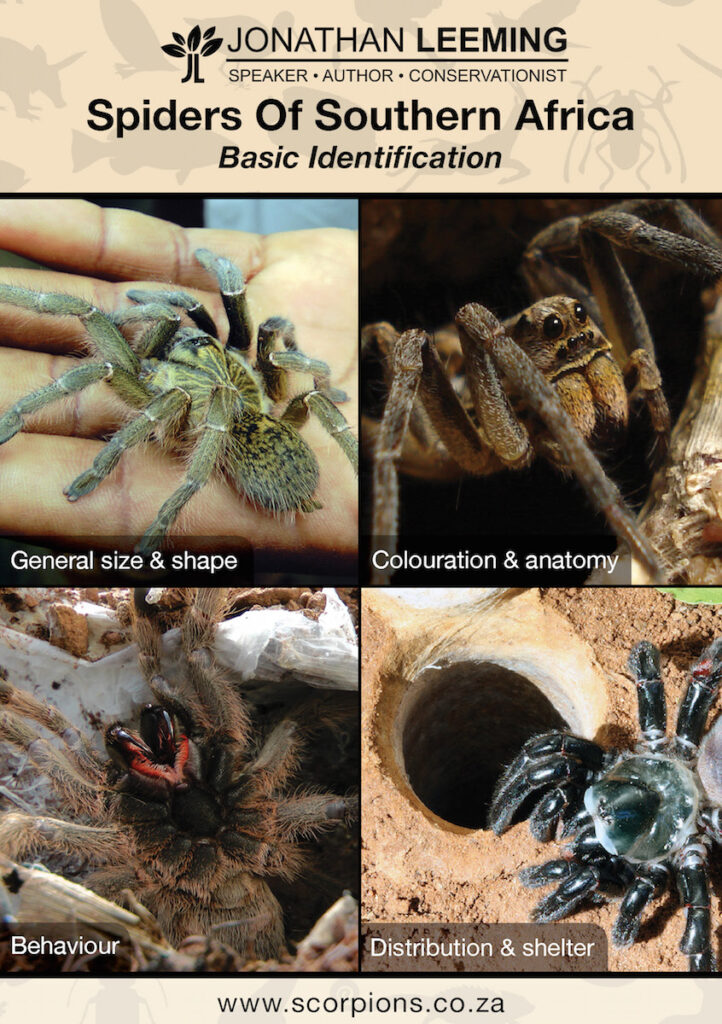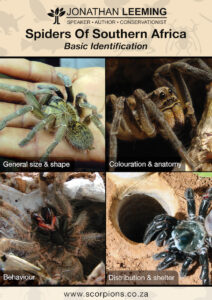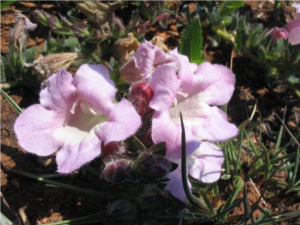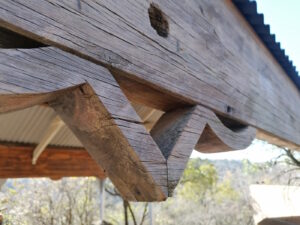There are about 2500 species of spider in southern Africa, occurring in a wide variety of terrestrial and aquatic habitats (including the intertidal zone). When identifying a spider, take note of the following:
With time and practice, identifying the common species of spider will become easier. There are many good books on spiders available from your local bookshop or online store. For a more in-depth experience, join someone who is knowledgeable on spiders on a walk or course.
- General size and shape – Spiders are very diverse creatures ranging in size from a leg span of just a few millimetres to over 16cm. Spiders that live on the ground usually have legs of equal length, spiders that live in a web often have an elongated first pair of legs.
- Colouration and anatomy – The spider’s general colouration or unique markings and patterns can be a reliable indicator of species. Spider taxonomy closely relies upon eye patterns with which to classify spiders into families.
- Behaviour – many species of spider exhibit characteristic behaviour which can be used in identification. Some spiders jump, walk in a unique way, or react characteristically when threatened. A spider can be nocturnal or diurnal.
- Distribution and shelter (web) – Spiders are not randomly distributed throughout the environment, but rather seek out specific areas in which to make their shelter or spin a web. Fishing Spiders can be found near water, Daddy Long-Legs Spiders prefer dark out of the way places, and adult Golden Orb-Web Spiders spin a distinctively gold coloured web.





